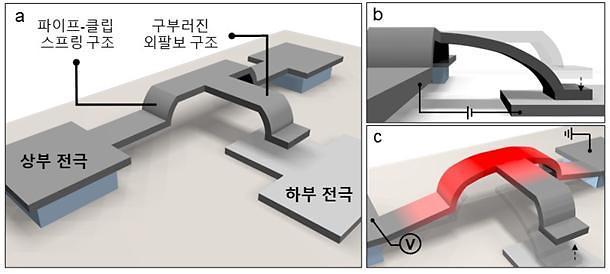
[Courtesy of KAIST]
SEOUL -- State researchers have developed a memory-over-storage technology that integrates the characteristics of both non-volatile memory and ultra-low latency solid-state drive. The integrated memory technology that can provide large-capacity storage and the fast processing speed of volatile memory, known as dynamic random-access memory, will be ideal for facilities such as data centers and supercomputers.
While volatile dynamic random access memory (DRAM) offers a superior processing speed, stored data is lost when power is cut. Non-volatile memory commonly used for storage devices is slower in processing but data is safely kept. Because of their directly-opposed characteristics, ordinary computer systems use both types of memories for processing and data storage.
To prevent data loss in situations such as power blackouts and disasters, non-volatile dual in-line memory (NVDIMM) is used. NVDIMM is basically a chip that contains DRAMs and supercapacitors. Along with the processing power of volatile memory chips, it can maintain data in emergency situations. However, it is hard for NVDIMM to process large-capacity data because of limitations in the size of DRAMs and batteries that are put on chips.
The Korea Advanced Institute of Science & Technology (KAIST) said in a statement on March 16 that a research team led by Professor Jeong Myung-soo has developed a memory-over-storage (MoS) technology that has a processing power similar to a DRAM chip. The technology uses ultra-low latency solid-state drives (SSDs) as main memory and NVDIMM as cache memory.
Unlike the ordinary computation process that uses an operating system (OS) to access and read data inside an SSD, KAIST's MoS technology allows a computer's memory controller hub (MCH) to directly process all data. The technique will reduce the computation time and use the large-capacity data storage as ordinary memory for processing. KAIST said the new technology consumes 45 percent less energy and has up to 110 percent data read and write speed than conventional memory systems.




